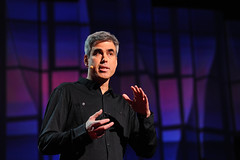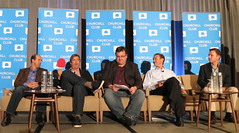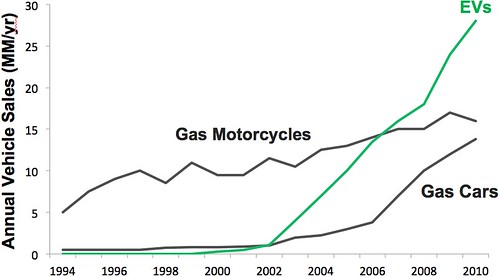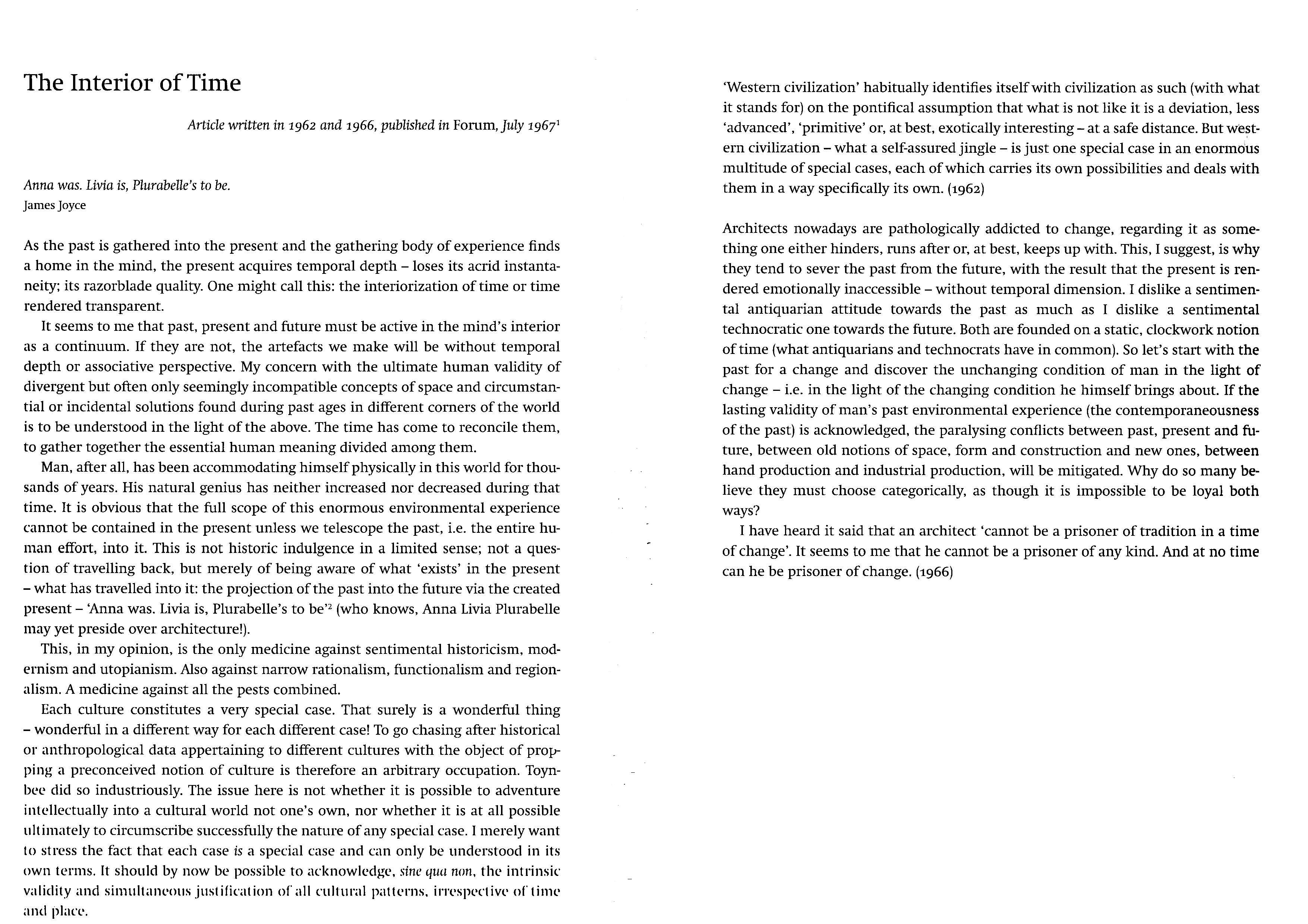
Where do our moral judgments come from?
Via Flickr:
Jonathan Haidt at TED2012: Full Spectrum. February 27 - March 2, 2012. Long Beach, CA. Photo: James Duncan Davidson
According to moral foundations theory, morality begins as a set of evolution-derived intuitions, which each child then learns to apply within his or her culture. Haidt suggests six dimensions or categories or foundations, into which nearly all our intuitions fall:
1) help those in need and minimize suffering everywhere (the care/harm foundation);
2) reward people according to what they contribute (fairness/cheating);
3) advance the fortunes of your group (loyalty/betrayal);
4) defer to legitimate superiors and protect subordinates (authority/subversion);
5) resist domination by illegitimate authority (liberty/oppression);
6) respect your group’s totems and taboos (sanctity/degradation).
Churchill Club Top Ten Tech Trends 2012
Via jurvetson on Flickr:
This is the most difficult speaking event, by far, that I take on, and somehow I keep coming back.
Just spank me with that red paddle!
Five panelists are asked to come up with two tech trends that we think are worthy of the top 10 title, and that are, as they instruct:
1) Not obvious today
2) You believe there will be explosive growth in about five years’ time
When you do this for many years, it gets harder and harder. For several years now, I have done this, and have to come up with new ones each year. If it's too obvious, it's boring. If it's too radical, it might not be relevant over the next five years. And it had to be important and new... worthy of a top 10 tech trend.
So, here are the 10 trends...
What do you think? Which do you agree most with? Disagree most with? Think are too obvious?
Trend 1. Radical Globalization of Social Commerce (Kevin Efrusy)
In prior cycles, international segments consisted of 30-40 percent of revenue, begun 3-5 years after the US effort. Going forward, "ROW" can dominate domestic, and players who wait to address it are vulnerable to competitors who go global first.
Trend 2. Zero Marginal Cost Education (Bing Gordon)
In the 1970s, ATMs were considered “dehumanizing” and bank tellers were the gold standard. But tellers got worse, while ATMs improved. Public education seems to be repeating this pattern, and the oligopolists of “big education” don’t seem to have read Innovator’s Dilemma.
Trend 3. Massive Sensors and Data (Reid Hoffman)
Sensors cost trends to zero; there are sensors everywhere and part of everything. In combination, we'll create multiple data collections that power applications and innovations to improve our lives. Genetics, disease, and symptom data for automate tri-corders, precision diagnosis, and personalized medicine. Collaborative filtering of all kinds of discovery– from music to information to professional training.
Trend 4. All Vehicles Go Electric (Steve Jurvetson)
Eventually all motor vehicles will transition to an electric drive train, affording greater efficiency, convenience, and a multitude of new design options. Within five years, this inevitability will become clear.
Trend 5. A Shift Toward Technocracy: Doing More with Less (Peter Thiel)
Democrats want government to do more with more. Republicans say government should do less with less. Technology might allow it to do more with less.
Trend 6. It's Just the Venture Cycle (Kevin Efrusy)
The fortunes of Silicon Valley rarely mirror the rest of the world because the ebb and flow of creative disruption follows a different pattern and 14-16 year cycle than the macro economy. We appear to be right on schedule...
Trend 7. Gamification of Everything (Bing Gordon)
As Lance Armstrong wrote, “Every second counts.” As digital natives increasingly multi-task, and as the social web creates geometric growth in posts, the battle is for engagement. For the growing population of game-players, reportedly 70% of Americans, games are important systems for creating meaning, and can increase behavior by 25 to 100%.
Trend 8. The New Hardware: Bits to Atoms (Reid Hoffman)
Open Source patterns now applied to hardware. Collective design bases with rapid modifications. Flexible manufacturing producing limited run and unique devices. 3D printing means revolution in custom and unique goods. Ultimately, revolutions in biological and medical products and solutions.
Trend 9. Moore's Law Accelerates Beyond Silicon (Steve Jurvetson)
When we consider Moore’s Law in the abstract, the dropping cost of computation is not tapering off. Rather it will accelerate further still as we look beyond the silicon era.
Trend 10. The Beginnings of Bioinformatics; Intelligent Design Over Random Drug Discovery (Peter Thiel)
More powerful computers will turn biology into an information science.
jurvetson
you can start here. I argued that from a customer value measure, Moore’s Law itself will accelerate beyond what Intel and Moore himself would predict. This will come from radically new architectures and new ways to compute.
The EV trend must not be obvious because all of my fellow VC panelists disagreed. Here are my notes on what I argued:
First: the importance: the U.S. spends $2B per day (+$4B if you count indirect costs) on oil, mostly for our vehicles. Larger than the entire Internet market
While most everyone agrees that we have to eventually get off oil if you look far enough in the future (think 10,000 years), the question is when and how. Not if.
Why go electric? Even if you want to burn oil, fracked gas, or a biofuel, for some reason, it’s better to do it in a centralized plant because of the heat loss in small engines. A modern Siemens cogen plant is 70% efficient. Our cars are 20%. EVs like Tesla are 88% efficient.
I showed a slide with images of a bunch of gorgeous cars coming out in the next 18 months. All of these cars have a lower total cost of ownership than a Taurus.
Convenience: almost no maintenance for an EV. Mainly tires.
Cambrian explosion of body plans:
• Small motor size - > flexibility
• Model X: Falcon-wing doors: access and storage of a minivan + outperforms a Porsche 911
• Google Robocars – need drive by wire.
Why now? 29 new electric drive train vehicles in next 18 months. First generation of native EVs shipping this year.
FedEx: so proud of their new electric fleet, they are doing test drives over at the Rosewood.
Air quality? China has to go electric.
Surprise! There are 200M EVs on road today in China, built by 1,300 different Chinese manufacturers.
Mostly electric scooters. Uptake started with SARS (people feared public transportation), and then they discovered the the total cost of ownership is less than the public bus fare (even with VRLA battery replacements).
Here's the growth curve I pulled together with Weinert from Chevron and now Bosch China:
Screen Shot 2012-06-08 at 11.17.43 AM
Now the largest of those Chinese eBike manufacturers are making “four wheel bikes”
If China does not go electric, and instead buys more gas-burning cars by 2050 than exist on the road today (as is forecast), the planet is screwed.
In the future, when all vehicles are electric, we will look back to the current era and marvel that there were a billion oil-burners driving around the planet wasting 80% of their energy as heat and applying only 0.3% of that energy to moving the passenger.
The Tech Trend prediction is not that we will change a billion vehicles in 5 years, by no means, but that hopefully we can change a billion minds. We used to take cigarette smoking as a given. It should be much easier to give up our addiction to oil and our smoking cars, because the new EVs will be so much more affordable, convenient and fun.
seatonsnet
I hate to be a party pooper, but I think the major trend in the next few years is going to be the increasing pauperization of the middle class in developed countries leading to a fracture in elemental social cohesion, with the cost of food turning much of the developing world into riot and terrorism prone failed or semi-failed states, which would most probably lead to an extremely toxic political environment. Also the increasing resistance of bacteria to antibiotics, www.bloomberg.com/news/2012-05-07/drug-defyin g-germs-from... may make the coming decades look like 14th century Europe
This is the most difficult speaking event, by far, that I take on, and somehow I keep coming back.
Just spank me with that red paddle!
Five panelists are asked to come up with two tech trends that we think are worthy of the top 10 title, and that are, as they instruct:
1) Not obvious today
2) You believe there will be explosive growth in about five years’ time
When you do this for many years, it gets harder and harder. For several years now, I have done this, and have to come up with new ones each year. If it's too obvious, it's boring. If it's too radical, it might not be relevant over the next five years. And it had to be important and new... worthy of a top 10 tech trend.
So, here are the 10 trends...
What do you think? Which do you agree most with? Disagree most with? Think are too obvious?
Trend 1. Radical Globalization of Social Commerce (Kevin Efrusy)
In prior cycles, international segments consisted of 30-40 percent of revenue, begun 3-5 years after the US effort. Going forward, "ROW" can dominate domestic, and players who wait to address it are vulnerable to competitors who go global first.
Trend 2. Zero Marginal Cost Education (Bing Gordon)
In the 1970s, ATMs were considered “dehumanizing” and bank tellers were the gold standard. But tellers got worse, while ATMs improved. Public education seems to be repeating this pattern, and the oligopolists of “big education” don’t seem to have read Innovator’s Dilemma.
Trend 3. Massive Sensors and Data (Reid Hoffman)
Sensors cost trends to zero; there are sensors everywhere and part of everything. In combination, we'll create multiple data collections that power applications and innovations to improve our lives. Genetics, disease, and symptom data for automate tri-corders, precision diagnosis, and personalized medicine. Collaborative filtering of all kinds of discovery– from music to information to professional training.
Trend 4. All Vehicles Go Electric (Steve Jurvetson)
Eventually all motor vehicles will transition to an electric drive train, affording greater efficiency, convenience, and a multitude of new design options. Within five years, this inevitability will become clear.
Trend 5. A Shift Toward Technocracy: Doing More with Less (Peter Thiel)
Democrats want government to do more with more. Republicans say government should do less with less. Technology might allow it to do more with less.
Trend 6. It's Just the Venture Cycle (Kevin Efrusy)
The fortunes of Silicon Valley rarely mirror the rest of the world because the ebb and flow of creative disruption follows a different pattern and 14-16 year cycle than the macro economy. We appear to be right on schedule...
Trend 7. Gamification of Everything (Bing Gordon)
As Lance Armstrong wrote, “Every second counts.” As digital natives increasingly multi-task, and as the social web creates geometric growth in posts, the battle is for engagement. For the growing population of game-players, reportedly 70% of Americans, games are important systems for creating meaning, and can increase behavior by 25 to 100%.
Trend 8. The New Hardware: Bits to Atoms (Reid Hoffman)
Open Source patterns now applied to hardware. Collective design bases with rapid modifications. Flexible manufacturing producing limited run and unique devices. 3D printing means revolution in custom and unique goods. Ultimately, revolutions in biological and medical products and solutions.
Trend 9. Moore's Law Accelerates Beyond Silicon (Steve Jurvetson)
When we consider Moore’s Law in the abstract, the dropping cost of computation is not tapering off. Rather it will accelerate further still as we look beyond the silicon era.
Trend 10. The Beginnings of Bioinformatics; Intelligent Design Over Random Drug Discovery (Peter Thiel)
More powerful computers will turn biology into an information science.
jurvetson
you can start here. I argued that from a customer value measure, Moore’s Law itself will accelerate beyond what Intel and Moore himself would predict. This will come from radically new architectures and new ways to compute.
The EV trend must not be obvious because all of my fellow VC panelists disagreed. Here are my notes on what I argued:
First: the importance: the U.S. spends $2B per day (+$4B if you count indirect costs) on oil, mostly for our vehicles. Larger than the entire Internet market
While most everyone agrees that we have to eventually get off oil if you look far enough in the future (think 10,000 years), the question is when and how. Not if.
Why go electric? Even if you want to burn oil, fracked gas, or a biofuel, for some reason, it’s better to do it in a centralized plant because of the heat loss in small engines. A modern Siemens cogen plant is 70% efficient. Our cars are 20%. EVs like Tesla are 88% efficient.
I showed a slide with images of a bunch of gorgeous cars coming out in the next 18 months. All of these cars have a lower total cost of ownership than a Taurus.
Convenience: almost no maintenance for an EV. Mainly tires.
Cambrian explosion of body plans:
• Small motor size - > flexibility
• Model X: Falcon-wing doors: access and storage of a minivan + outperforms a Porsche 911
• Google Robocars – need drive by wire.
Why now? 29 new electric drive train vehicles in next 18 months. First generation of native EVs shipping this year.
FedEx: so proud of their new electric fleet, they are doing test drives over at the Rosewood.
Air quality? China has to go electric.
Surprise! There are 200M EVs on road today in China, built by 1,300 different Chinese manufacturers.
Mostly electric scooters. Uptake started with SARS (people feared public transportation), and then they discovered the the total cost of ownership is less than the public bus fare (even with VRLA battery replacements).
Here's the growth curve I pulled together with Weinert from Chevron and now Bosch China:
Screen Shot 2012-06-08 at 11.17.43 AM
Now the largest of those Chinese eBike manufacturers are making “four wheel bikes”
If China does not go electric, and instead buys more gas-burning cars by 2050 than exist on the road today (as is forecast), the planet is screwed.
In the future, when all vehicles are electric, we will look back to the current era and marvel that there were a billion oil-burners driving around the planet wasting 80% of their energy as heat and applying only 0.3% of that energy to moving the passenger.
The Tech Trend prediction is not that we will change a billion vehicles in 5 years, by no means, but that hopefully we can change a billion minds. We used to take cigarette smoking as a given. It should be much easier to give up our addiction to oil and our smoking cars, because the new EVs will be so much more affordable, convenient and fun.
seatonsnet
I hate to be a party pooper, but I think the major trend in the next few years is going to be the increasing pauperization of the middle class in developed countries leading to a fracture in elemental social cohesion, with the cost of food turning much of the developing world into riot and terrorism prone failed or semi-failed states, which would most probably lead to an extremely toxic political environment. Also the increasing resistance of bacteria to antibiotics, www.bloomberg.com/news/2012-05-07/drug-defyin g-germs-from... may make the coming decades look like 14th century Europe
Prioritization
ProductCamp Boston has just met and here are the slides from a presentation on Advanced Roadmapping for Product People
Entrepreneuring in Online Social Networks: From Brokerage vs. Closure to Brokerage and Closure
This work takes a structuration view of entrepreneuring in online social networks. Social capital theory informs the idea that network entrepreneurship is a function of brokerage and closure qua agency and structure, respectively. The purpose of this undertaking is to extend existing theory to the emerging phenomenon of network entrepreneuring as it applies to a little understood, yet rich in potential, area of social action, online networking. The importance of this contribution is to extend existing theory to, and indicate the empirical potential of, online social networks, while revealing the entrepreneurship dynamics that are essential to the networks’ formation.
Introduction
In online social networks, connecting strangers is entrepreneuring. Wikipedia defines a virtual community as “a social network of individuals who interact through specific media, potentially crossing geographical and political boundaries in order to pursue mutual interests or goals. One of the most pervasive types of virtual community includes social networking services, which consist of various online communities.[1]” Using the internet to enable individuals the traversal of boundaries defines network entrepreneurship; successful entrepreneuring results in online social networks.
Online social networks have come a long way from the early days of Usenet, the worldwide-distributed discussion system organized by subject, yet we know little about how the role of the network entrepreneur. Today’s online social networks represent the “ new era of democratic and entrepreneur networks and relations where resources flow and are shared by a large number of participants with new rules and practices” (Lin, Cook et al. 2001). Facebook, arguably the most successful online social network to date, boasts an active membership in excess of 500 million, that spends over 700 billion minutes per month on its website as reflected also by the “over 900 million objects that people interact with (pages, groups, events and community pages). [2]” Flickr, an online network of photography enthusiasts reported on its blog that it hosted 5 billion photos as of September 19, 2010.[3] As well, by January 2011, LinkedIn, the online networking site for professionals, has reached over 90 million members at a membership rate of one new member per second.[4] These data points suggest that online networks are emerging as an important social phenomenon whose implications can hardly be overstated, yet we are only beginning to grasp.
The internet, as network of networks, makes it trivial to set up networks, yet people do not seem to simply aggregate in online social networks. This is the role of the network entrepreneur, to identify the networking opportunity round a social focus, and create the social network accordingly. The current work is a theory driven exploration that considers the entrepreneurial opportunity in online social networks as interplay between agency and structure. The thrust of the theoretical argument is one whereby the perception of value between brokerage and closure explains, and is explained by, the structural evolution of the social network. The contribution is a model describing entrepreneurial opportunity in online social networks.
This work continues by theoretically positioning network entrepreneurship as a structuration process whereby the entrepreneur is prompted by network structure and associated perceptions of value into action. Next, the connection between network structure and value is made by means of social capital. After a summary of the relations along network structures, types of social capital and network actions is created, the whole analysis is redone in the particular context of online social networks, which change the prior relations among structure, value and action. Next, a couple of examples from Flickr illustrate different alignments along structure, value and action. In closing, there is the section discussing the results and evaluation the methodological implications for future research. [1] http://en.wikipedia.org/wiki/Virtual_community
[2] http://www.facebook.com/press/info.php?statistics Accessed January 20, 2011.
[3] http://blog.flickr.net/en/2010/09/19/5000000000/ Accessed January 20, 2011.
Setting the Stage for Empirical Research in Virtual Social Networks
This work sets the theoretical stage for future empirical investigations of the socio-economic dynamics in virtual social networks (VSN), at member and network entrepreneur levels. In so doing, I start by identifying the empirical loci, Flickr and LinkedIn, justify and describe the choices. A model of the utility function of the generic VSN member is followed by descriptions of the value dynamics for each VSN, which in turn create the premise for an economic model of VSN as platforms for multi-sided markets. The model is built by considering several theoretical angles from the perspectives of microeconomics and sociology of networks. The contribution is in extending theoretical and empirical insights across disciplines and fields with the idea of exploring and understanding the emerging VSN-phenomenon.
Complementarity of Industry-level vs. Firm-level Factors Leading to Consolidation in the ERP Industry
Three firms control now 43% of the enterprise software applications market, whose growing revenue is projected by Gartner to surpass $253.7 billion in 2011.[1] This level of industry concentration is part of an ongoing trend that characterizes the declining stage in an industry lifecycle model (Porter 1980). As such, the research opportunity is to build a formal model to explain the industry factors leading up to such high levels of concentration, while being able to capture firm level strategies as well. Moreover, given the magnitude of change in a relatively short period of time in this industry, the transformation that is still going on makes for a quasi-natural experiment, whereby the researcher can test theory driven hypotheses.
It is my objective in undertaking this work to build a testable model that answers the following research question: What are the industry-level vs. firm-level factors leading to industry consolidation in the enterprise software applications industry? The immediate contribution would be to establish conceptual and methodological linkages between industry and firm level factors leading up to consolidation higher concentration. In other words, a potential contribution is to expose the often-ignored ‘conduct’ part in the structure-conduct-performance paradigm. At a later stage, the model is to be tested not only on the focal industry herein, but also on other industries.
The industry level working hypothesis is that a significant decrease in environmental munificence triggers both the emergence of a dominant design, and a shakeout in the industry (Utterback et al. 1993; Klepper et al. 2005). The emerging dominant design in the enterprise software industry realizes platform economies—of scale, scope and skill—by vertically integrating complementary assets (Teece 1986; Rothaermel et al. 2005). The formal model suggests that the enterprise software applications market tends to settle towards the Bertrand equilibrium around the marginal cost of the most efficient player.
[1] Gartner is one of the top information technology groups of industry analysts. The source of this quotation is at: http://www.gartner.com/it/page.jsp?id=1535314
When the world runs short of excuses
Attending a conference on entrepreneurship, there was a contest whose finalists included a team entrepreneuring a new idea for a dating website: Dinner for 6.
This is obviously a great idea, and that's not because there are not already too many dating sites out there, but because it gives people a plausible excuse to get together about, and round, fundamentals.
In a world debased of meaning, where people go to great lengths as if to avoid addressing the fundamentals, we need a good pretext or alibi to reengage more than ever.
This is obviously a great idea, and that's not because there are not already too many dating sites out there, but because it gives people a plausible excuse to get together about, and round, fundamentals.
In a world debased of meaning, where people go to great lengths as if to avoid addressing the fundamentals, we need a good pretext or alibi to reengage more than ever.
 |
Using her sickness as a pretextAccession Number: 1990:755 Display Title: Using her sickness as a pretext Suite Name: Media & Support: Opaque watercolor and gold on paper Creation Date: ca. 1760 Creation Place/Subject: India State-Province: Rajasthan Court: Kishangarh School: Rajasthani Display Dimensions: 6 11/16 in. x 5 7/16 in. (16.99 cm x 13.81 cm) Credit Line: Edwin Binney 3rd Collection Label Copy: EDWIN BINNEY 3RD GALLERYTHE CHILD KRISHNA INSTALLATION There is much poetry devoted to the heroine sick with love. Here three women attend a reclining maiden. One, dark of skin, stoops to embrace the stricken lady, and the two lock gazes. Is it a love game, so often played by the gopis, where, in Krishnas absence, they pretend to be him? Has the dark-skinned girl been chosen to lighten the heart of the love-sick girl by pretending to be Krishna coming to the bedside of his beloved? """ Repository: The San Diego Museum of Art |
The Five Most Popular Talks Given at TED
(according to NYMag)
1. Ken Robinson on Creativity
“By the time they get to be adults, most kids have lost the capacity to take a chance. They have become frightened of being wrong. Our education system has mined our minds in the way that we strip-mine the earth: for a particular commodity. And for the future, it won’t serve us.”
2. Jill Bolte Taylor on Her Own Stroke
“In the course of four hours, I watched my brain completely deteriorate in its ability to process all information. At first I was shocked to find myself inside of a silent mind. But then I was immediately captivated by the magnificence of the energy around me.”
3. David Gallo on Underwater Life
“Today we’ve only explored about 3 percent of what’s out there in the ocean. And in a place where we thought there was no life at all, we find more life, we think, and diversity and density than the tropical rain forest, which tells us that we don’t know much about this planet at all.”
4. Arthur Benjamin on Mathemagics
“I combine my loves of math and magic to do something I call ‘mathemagics.’ I know as a magician we’re not supposed to reveal our secrets. [But] without any more stalling, here we go. Now, 57 times 68 is 3,400 plus 476 is 3,876, that’s 38,760 plus 171, 38,760 plus 171 is 38,931 … ”
5. Hans Rosling on Stats
“I would like to compare Uganda with South Korea with Brazil. You can see that the speed of development is very, very different, and the countries are moving more or less at the same rate as money and health, but it seems you can move much faster if you are healthy first than if you are wealthy first.”
1. Ken Robinson on Creativity
“By the time they get to be adults, most kids have lost the capacity to take a chance. They have become frightened of being wrong. Our education system has mined our minds in the way that we strip-mine the earth: for a particular commodity. And for the future, it won’t serve us.”
2. Jill Bolte Taylor on Her Own Stroke
“In the course of four hours, I watched my brain completely deteriorate in its ability to process all information. At first I was shocked to find myself inside of a silent mind. But then I was immediately captivated by the magnificence of the energy around me.”
3. David Gallo on Underwater Life
“Today we’ve only explored about 3 percent of what’s out there in the ocean. And in a place where we thought there was no life at all, we find more life, we think, and diversity and density than the tropical rain forest, which tells us that we don’t know much about this planet at all.”
4. Arthur Benjamin on Mathemagics
“I combine my loves of math and magic to do something I call ‘mathemagics.’ I know as a magician we’re not supposed to reveal our secrets. [But] without any more stalling, here we go. Now, 57 times 68 is 3,400 plus 476 is 3,876, that’s 38,760 plus 171, 38,760 plus 171 is 38,931 … ”
5. Hans Rosling on Stats
“I would like to compare Uganda with South Korea with Brazil. You can see that the speed of development is very, very different, and the countries are moving more or less at the same rate as money and health, but it seems you can move much faster if you are healthy first than if you are wealthy first.”
POWER
POWER is that resource that can be transformed in other resources in the absence of markets.
 |
| ton pouvoir par emmanuelle pidoux |
Subscribe to:
Comments (Atom)













